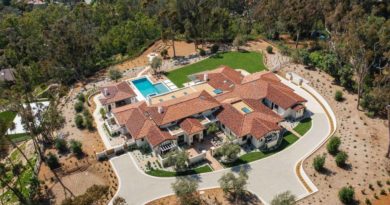The Big Building Negotiator
Charles Black leads discussions for high-profile development projects
Earlier this year, the San Diego Convention Center Corp. hired real estate attorney and developer Charles Black to manage its proposed $753 million expansion. The hiring came soon after Black finished negotiating against the Convention Center, working out a deal that gave the city control of the land needed for the expansion.
Such chameleon-like shifting between public agencies and private companies is becoming Black’s M.O. He’s already leading discussions for other high-profile projects like the Chula Vista bayfront development and a new $294 million city of San Diego Civic Center.
Black now is the city’s top negotiator for the Civic Center project, a position he took after the private developer he had backed in the project dropped out.
Black earned his big building stripes years ago and helped spearhead the Downtown Petco Park development for the San Diego Padres.
With a Civic Center measure to appear on the November ballot and the high-profile Comic-Con convention last month month, we sat down with Black in his office Downtown to discuss both projects.
Q. Can you explain how the campaign for a new City Hall is different or similar to the campaign for Petco Park?
A. The primary difference is that for Petco Park, Proposition C back in 1998, there were lots of people contributing to it but the primary donor was the Padres. The Padres financed that campaign and they staffed it. The policy decision on whether or not the city will have a new City Hall will be up to whomever finances the campaign and whomever runs the campaign.
I think that’s the biggest problem that we have. The people who you would normally look to fund a campaign don’t think that we should have a campaign. I don’t know how that’s going to be resolved. It’s going to be worked through by people above my pay grade.
Q. What would the lifespan for the new City Hall be?
A. The existing city-owned buildings were built in 1964. They’re approaching 50 years of age. There are other buildings in the city that were built around the same time that are going strong. It’s really all about the quality of the building initially and how it’s maintained. The (operations and maintenance) costs on City Hall have been low-hanging fruit in the city’s budget for as long as I can remember. This city over time has skimped on those O&M costs. You’ve got to spend money on buildings to keep them up and extend their useful lives. A good building, a building of the quality we’re planning that’s properly maintained, should last more than 100 years.
Q. Last year, Irving Hughes and two Downtown real estate experts said that rent assumptions that went into this proposal were inflated and I’m wondering how confident you are in those assumptions that now are made in these reports.
A. They’re not rent assumptions. The numbers in the proposals, in the financial comparisons, are based on rent proposals that we got from existing landlords. We went out at the end of 2009 and those landlords had every incentive to give the city their best number, their most aggressive number because they knew this city was going to make a decision on its occupancy plans based on those numbers. I think Irving Hughes’ criticisms don’t apply to this process because these are real numbers and we have a high level of confidence that they’re accurate.
Q. Let’s talk about the size of the building. That’s the most striking change between this building and the previous proposal.
A. The building got smaller. However, we still wanted to make it large enough to accommodate some long-term use by the city. We took that 2,420 number (the number of city employees currently working Downtown), and we assumed based on consultations with the city’s COO, that there’s going to be continued shrinkage of the city’s workforce for about five years.
Q. So the bottom of the number of city employees will come five years from now?
A. Yes. We really don’t anticipate growth. We anticipate some minor shrinkage over the next five years. And then if you start to grow it at its historic rate of 6/10ths of 1 percent, by 2025 we would need to move the water department out. Then the building can accommodate growth to 2035. So it’s good for 25 years. Then if it continues to grow, there are other opportunities to house people Downtown. It was my thought that it makes no sense for the city to spend 2010 dollars or 2014 dollars to buy space to accommodate growth that occurs 25 or 30 years down the road. That would be silly.
Q. For at least a year, the biggest question about the Convention Center expansion is how the city would pay for it. What are the current proposals for funding it?
A. There are the traditional methods and you’ve heard those discussed in the mayor’s task force (hotel-room tax, a tax on Downtown-area businesses), some kind of a tax on a rental car surcharge. All of those may be appropriate, but you certainly can’t put all of the cost on the tourism and the lodging industry. There is a possibility of some half percent sales tax, something along those lines. There are just a bunch of different things that need to be looked at and we need to get a better understanding of what makes the most sense for the city and the region.
Q. Half-percent sales tax. I thought that would be for regular general fund revenue.
A. It could be, but it could be earmarked. We haven’t done an exhaustive analysis of all the opportunities out there. That’s going to be discussed. I think the mayor’s intention is to understand fully whether there’s a good prospect of finding a financing plan before we go too much further on the project.
(Editor’s Note: Reprinted with permission from voiceofsandiego.org. Interview conducted and edited by Liam Dillon.)


